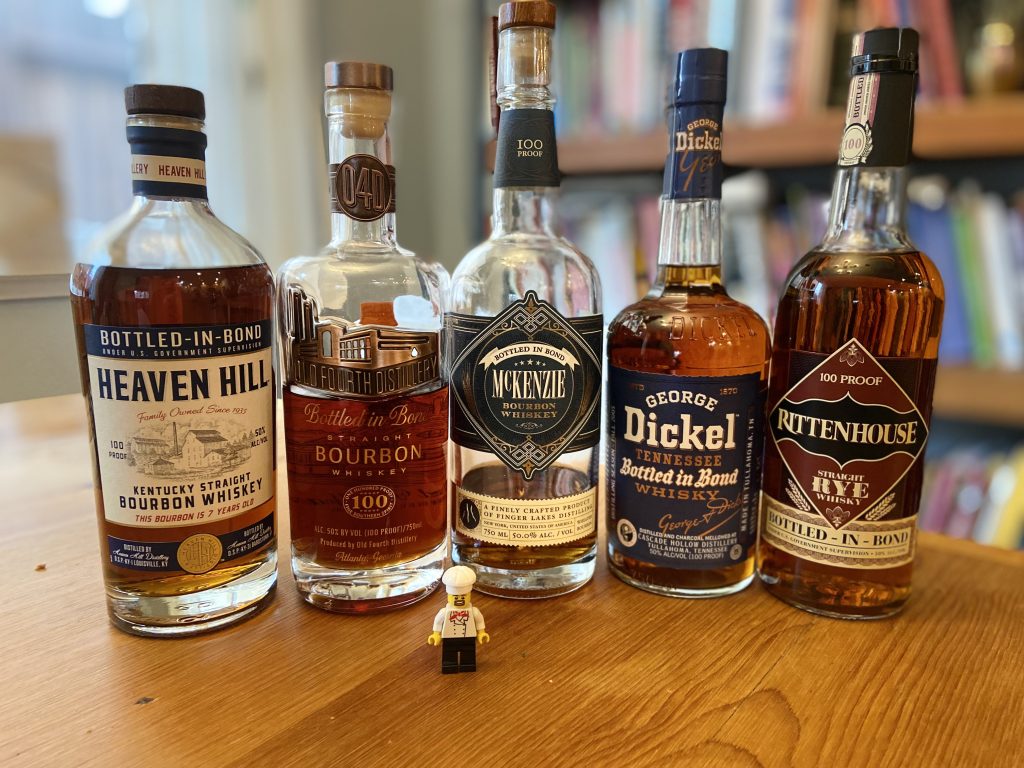(Plus Rittenhouse Rye Review)

On March 3rd, 1897 the US Congress passed the Bottled in Bond Act. This act was the very first food related consumer protection act passed in this country, beating the Pure Food and Drug act by almost a decade.
So what does Bottled-in-Bond mean? While not many people pay much attention to Bottled-in-Bond whiskeys, I bet if you mention “Single Malt Scotch” to someone, they immediately think of something that is high quality even if they couldn’t really tell you the definition of it. The two are actually similar in some ways. The “single” part of single malt means that it comes from a single producer, as opposed to a blended Scotch that is made by blending from more than one producer.
Bottled-in-Bond goes even further than the Single Malt designation. To be Bottled-in-Bond a whiskey must be produced at ONE distillery, during ONE distilling season (there are two distilling seasons a year) and aged in a Government Bonded Warehouse for at least four years. It must be bottled at 100 Proof (50% Alcohol by Volume) and the only thing that can be added to it is water to get it down to that proof. The distillery (and if bottled elsewhere, the bottling location) must appear on the BIB Stamp that is on each bottle.
For the consumer, this is a guarantee of purity as many things were added to “whiskey” to make it go further, shorten the time it had to age and of course cut the costs of the people selling it. The Bottled in Bond Act put a damper on this practice and The Pure Food and Drug Act put an end to it all together. The distillers got something out of this as well; not only did it help protect their brand integrity, it also gave them a bit of a tax break. Normally a distiller would have to pay taxes on the whiskey once it was distilled. Since whiskey ages for at least 2 years usually, that is paying on taxes on something you can’t sell. If you aged your whiskey in a government bonded warehouse for at least four years, you didn’t have to pay taxes on it until it was bottled (as long as you met all the other requirements, of course!)
Rittenhouse Rye
Rittenhouse Square Rye was a very popular whiskey from the Philadelphia area pre-Prohibition. It was what’s called a Monongahela Style Rye, which was a bit different from the strong, spice forward ryes of today. In 1948 they dropped the “square” part from the name, and carried on, but rye whiskey fell out of favor in the years to come, and then in the 1970’s and 80’s all types of whiskey fell out of favor as more people started drinking vodka and gin. In the 1990’s Heaven Hill Distillery (which has been owned by the same family since it began in the 1930’s) bought the brand and moved production down to Kentucky. It remained, as it had been since the 1940’s and is now, Bottled in Bond.
If you’ve read some of my writings on whiskey, then you know I’m not a fan of the hugely spicy ryes. Rittenhouse is an incredibly balanced whiskey, with notes of cinnamon typical of rye, but also with fruit forward flavors as well. It’s great for sipping neat, or in cocktails. And at under $25 a bottle, you can feel comfortable using it either way.
Rittenhouse Rye BIB
Aged at least 4 years (no age statement on bottle) 50% ABV
Nose: Oak, Bit of Leather, Stone Fruit
Taste: A swirl of Cinnamon, Bubblegum, Peach and Apricot with light hints of Leather repeat
Finish: The cinnamon comes back and lingers a bit mixed with a nice alcohol warming that is not overpowering at all. Medium length.
Have Fun Drinking Safely!